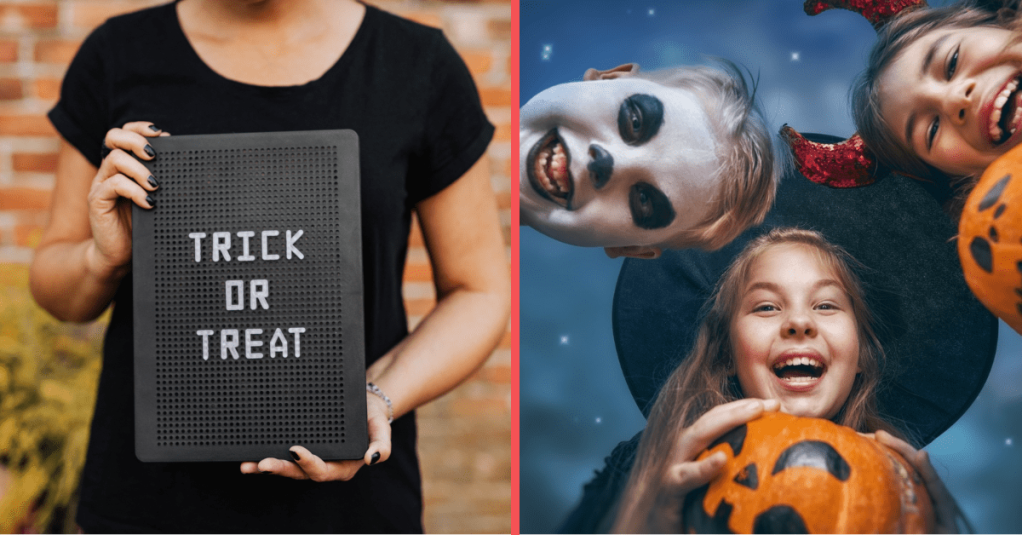Trending Now
It’s Halloween season, and it’s hard not to get excited! The costumes, the scary movies, and most of all the candy!
Nothing says Halloween like trick-or-treating: the tradition of dressing up in costume and receiving free candy from your neighbors.
But why do we say, “Trick or treat!” on Halloween anyway?

Image Credit: Pexels
Well, thanks to this Charlie Brown comic strip by Charles M. Schulz, we know the custom of saying “Trick or treat!” was established in American and Canadian pop culture in at least 1951.
Here’s that comic… and check out how different Charlie Brown looked back in the day.

Image Credit: Fandom
According to History.com, Halloween as we know it can be traced back to the ancient pre-Christian Celtic festival of Samhain (pronounced `Soo-when’ or `Saw-wen’). This name means “summer’s end” and was used to mark the end of the harvest and the beginning of winter.
The Celts believed that on this night the separation between the world of the living and the world of the dead was at its weakest. The spirits of those who’d died within the past few years, or could not find peace, would rise again to walk the Earth.

Image Credit: iStock
On this sacred night, the Celts lit bonfires and honored those who’d passed away. During some of these celebrations, villagers disguised themselves in costumes made from animal skins, to drive off unwelcome spirits, or laid out tables of food to placate them.
But what does that have to do with asking your neighbors for candy?

Image Credit: iStock
After the Christianization of Samhain by the Catholic church, the Pagan holiday was absorbed and reworked to fit the church.
What resulted was a trio of significant days: All Hallows Eve on Oct. 31st, followed by All Saint’s Day on Nov. 1, and finally All Souls Day on Nov. 2nd.
All Saint’s Day is a Catholic holiday dedicated to celebrating all saints and martyrs. All Souls Day became a day for honoring the dead.
As you can guess, All Hallow’s Eve eventually became Halloween.

Image Credit: Pexels
Trick or treating could tie back to the tradition of mumming, an All Hallow’s Eve custom in which people dressed up as spirits and demons and went from home to home, offering protection from evil spirits in exchange for food and drink.
It could also be traced back to “souling.” In the Middle Ages, poor people in Britain and Ireland would go souling on All Saint’s Day, in exchange for food. This meant venturing from home to home and promising to pray for the dead of those they visited, on All Souls Day.

Image Credit: iStock
“Guising” is another custom which could have ties to trick-or-treating. In late 19th century Scotland, children dressed up as evil spirits and went from home to home, carrying lanterns carved from turnips, asking for treats. This was done in an attempt to keep the actual spirits away.
European immigrants brought these customers to the United States and Canada, and they evolved into what we now know as Halloween.
While we may never know who first uttered the phrase, “trick or treat,” we can deduce that it comes from the practices mentioned above!

Image Credit: Unsplash
It’s interesting to look back at the origins of Halloween as we know it. I’ve always thought of the holiday, like most American holidays, as being one centered around consumerism, but it’s nice to know the origins are much more mysterious and meaningful.
What’s your favorite way to celebrate Halloween? Let us know in the comments!






